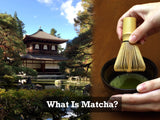
Shoyu Ramen is a type of Japanese noodle dish.
It consists of wheat noodles in a flavorful broth made with ingredients such as soy sauce, dashi, vegetables, and meats.
Shoyu Ramen is one of the most popular variations of Ramen and is enjoyed by many people worldwide due to its distinctive taste.
If you know about ramen, you've most likely eaten shoyu ramen.
This is one of the 4 most popular Japanese ramen (with the other 3 being: miso, shio and tonkotsu ramen).
Today we will be looking at the shoyu ramen in detail:
Shoyu ramen consists of broth, sauce, flavored oil, noodles, and toppings. The sauce is made up of mainly soy sauce and some other ingredients.
This is how this ramen got its name (shoyu means soy sauce in Japanese). Shoyu ramen is a light soup broth, which is a nostalgic and familiar taste for Japanese people. Because of this, shoyu is the prototype for the different types of ramen in Japan.
Shoyu ramen is a light soup broth, which is a nostalgic and familiar taste for Japanese people. Because of this, shoyu is the prototype for the different types of ramen in Japan.
It is usually made from chicken or pork broth. Japanese soup stock made up of various vegetables, konbu (kelp), or niboshi (dried sardines) is added to the broth to give depth to the flavour of the soup.


Common toppings for shoyu-based ramen are menma (sliced bamboo shoots), chashu (braised pork slices), green onion, and nori (dried seaweed).


In 1910, an inexpensive restaurant called Rairaiken in Asakusa, Tokyo served the first shoyu ramen which was also known as Tokyo ramen. Among Japanese ramen, shoyu ramen and shio ramen has one of the longest history.
For that reason, there are many variations of shoyu ramen all over Japan.
In Hokkaido, Asahikawa ramen is famous and Kitakata ramen is popular in the Tohoku region.
In Kanto, Tokyo ramen is well known, and In Kansai, Wakayama ramen is commonly-enjoyed.
These are all soy-sauce based ramen made with regional differences.
Today, I will be talking about a few of these different type of shoyu-based ramen.
Let's start with Asahikawa Ramen...
The most distinctive characteristic of Asahikawa ramen is its "double soup" and its "oil slick” floating on top of the ramen broth.
"Double soup" in terms of ramen means using two different kinds of broth.
One broth is made from pork, chicken, and beef bone or meat, and the other is seafood broth made from ingredients like konbu or bonito.
The reason why 2 kinds of broth is used in Asahikawa ramen is because this region used to have a large pig farming industry. Using pork bone, which was usually discarded, was a good idea as a part that cannot be sold could be put to use.
However, people didn't like the smell of pork bone, so in order to hide the smell, chefs used konbu and dried sardines.
Both Asahikawa and Hakata ramen soup use pork bone in their broth, but do you know what the difference between these two are?
The answer is...
The smell!
Asahikawa ramen doesn't have a strong pork bone smell like its Hakata counterpart.
In addition, Asahikawa ramen's pork bone soup has some influence from Ainu people (the indigenous Japanese people in Hokkaido). Both Ainu and Asahikawa ramen soup are cloudy from the pork bone.
The next characteristic of Asahikawa ramen is the oil slick on top of the ramen soup.
In the winter, Asahikawa city can reach temperature lows of -30C (-22F)!
In order to prevent the soup from getting cold, chefs put lard on the soup. This traps the steam inside the soup and keeps the soup piping hot. 
Wavy middle thick noodles are used in Asahikawa ramen.
Water content ratio of these noodles is low. This makes the noodles tougher and chewier than regular noodles.
The noodles absorb soup quickly, which means that the noodles can get soggy easily.
Green onion, menma, and chashu are commonly used for toppings of Aasahikawa ramen.
In the beginning, Asahikawa ramen was considered a copy of Sapporo ramen (capital city of Hokkaido).
However, it gradually became popular.
In 1947, legendary ramen shops called Hachiya and Aoba opened up and their Asahikawa-style ramen spread around the city, making this ramen extremely popular.
Now, let's take a look at Kitakata ramen.
In 1927, the owner of Genraiken, Ban Kinsei-san started a ramen food stall stand in Kitakata, Fukushima. There was no ramen in the city, but the taste of ramen spread all over the city and it became a part of people's life.
Ban Kinsei migrated to Japan from China after his parents' death. He worked as a construction worker in Yokohama and Tokyo, and then he moved to Kitakata to get a new job since his uncle worked at a mine there.
However he couldn't get a job at the mine, so he decided to sell noodles.
He didn't have any professional background as a chef, but he created a distinct noodle which is now known as Kitakata ramen. The characteristics of this ramen is very thick, flat, and wavy, which replicated the noodles from his hometown.
He walked around the city with his ramen stall and attracted attention by making high pitch sounds with a sorna (an ancient wood-wind instrument).
The most distinct characteristic of Kitakata ramen is its noodles. It is very thick, flat and wavy. Water content ratio of this noodles is high, so they are both chewy, and smooth.
Broth is made of transparent pork bone, and it is very simple. Some restaurants make transparent pork bone broth and dried sardine broth separately and pour it into the bowl together right before a bowl of ramen is served.
Common toppings for this ramen are chashu or kakuni, menma, naruto, and green onion.
We have talked about two types of shoyu ramen which were Asahikara ramen and Kitakata ramen. However, there is one more important shoyu ramen.
Do you know which shoyu ramen it is?
The answer is...
Tokyo ramen!
In 1859, Japan opened up some ports and foreigners started to live in foreign settlements in Japan. They introduced different kinds of cuisine to Japan including Chinese noodles.
In 1899, the Japanese government ended foreign settlements. This meant foreign people were allowed to travel and live anywhere inside of Japan. Because of that, Chinese noodles started spreading around Japan.
In 1910, a bowl of ramen which was a fusion creation between Chinese cuisine and Japanese cuisine was created at Rairaiken. This is the first shoyu ramen, which was also known as Tokyo ramen.
Tokyo ramen is considered the orthodox ramen.
Broth is mainly made of chicken bone, pork bone, dried sardines, and some vegetables.
When broth is cooked, the broth never come to a boil in order to maintain its clear color.
The sauce is made up of a combination of soy sauce and Japanese-style soup stock.
Thickness of noodles is medium-thick and they are wavy. .
Common toppings are chashu, menma, green onion, a boiled egg, and nori (dried Japanese seaweed).
Have you ever had any of these regional-specific shoyu-based ramen? Would you want to try them?
You can try making the different variations of Shoyu ramen in the comfort of your own home! We want to recommend some large ramen bowls to help you get started!
All The Different Ramen Types: It'll Instantly Make You A Ramen PhD






Hi Glenn,
Thanks for sharing!
I’m so glad to hear you found such a great ramen place while visiting Hokkaido.
Nowadays, it’s great that not much travel is needed within Japan to sample different types of ramen, as different types of region-specific ramen is being introduced from other areas.
When I was a kid, the restaurants around me only made shoyu ramen since I grew up in the Kanto region.
If you don’t mind, please share the ramen restaurant’s name with us!
During our most recent visit to Hokkaido we really enjoyed the ramen at the ramen village in Asahikawa and one place we went back twice for their tonkatsu ramen and was much tastier than the ones in Sapporo
Hi Mitch,
Thanks for commenting!
We’re so glad you found this information on shoyu ramen informative!
Very interesting article. Thanks for sharing this info on my favorite ramen
Leave a comment